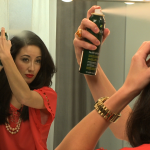Hair loss is a problem that affects both men and women. Most cases of hair loss are attributed to genetics. Minor cases can be linked to illnesses, medication and stress. Medication used to treat cancer patients (chemotherapy), drugs used for heart related illnesses and birth control pills for women can also lead to hair loss. Ringworm of the scalp and thyroid disease are examples of illnesses that cause hair loss.
Treatments
Treatment depends on the causative factor of the problem. They include drugs, surgery, and lifestyle changes. There are only two drugs permitted by the FDA to cure baldness. They are Rogaine and Propecia.
Rogaine
It is an ointment that is rubbed onto the scalp where there is no hair growth. It is however not very effective in propagating hair growth. Less than 20% of users have reported hair growth since they started using Rogaine. The lotion is more effective in slowing down hair loss than treating baldness.
Propecia
This is the first pill used in treatment of baldness in men. It is very effective, although results may be easily lost once the treatment is discontinued. This drug should be used under the doctor’s guidance and prescription.
Surgery
Baldness can also be cured using hair replacement surgeries, such as scalp reduction and hair transplantation procedures (slit grafting, micro-grafting and punch grafting). The best surgical procedure depends on patient’s circumstances or desires and the type of hair loss. Another procedure that has been used successfully is the Platelet-rich plasma (PRP). Although it was designed to improve the healing process of patients who had undergone joint surgery, PRP has been found to be very effective in treatment of baldness.
PRP involves separation of platelets from plasma. The plasma is then injected into bald scalp. This helps to repair blood vessels, promote cell growth and stimulate production of collagen. These are necessary for hair growth. PRP is safe and has no major side effects apart from redness at the injected area and some minimal pain.
Other Hair Replacement Methods
Hair Grafting
This is a hair transplanting technique where a section of hair-bearing area of the head is removed. It is then cut into small portions each bearing hair, known as grafts. These grafts are finally transplanted into the balding area. Common side effects of hair grafting include lack of sensation on the affected areas, swelling of the scalp, crusting on the removal and transplanted sites and itching at the removal site.
Scalp Reduction
It involves removal of bald section of the scalp. This exposes the hair-bearing skin, which is then stretched to fill the bald area. This procedure can only be done to treat baldness at the back and on top of the head. It does not work for the frontal hairline. It can however be performed jointly with hair grafting. Common side effects of this procedure include: scalp tightness for several months, headaches and pains after surgery.
Non-surgical Method
If you are not particularly comfortable with surgical methods of hair loss treatment, you may opt to use wigs. Wigs are categorized into two: synthetic wigs and human hair wigs. Synthetic wigs are manufactured from artificial fibers, while human hair wigs are created from natural human hair. If you want to have the natural feel of real natural hair on your scalp, then human hair wigs should be your preferred choice. If however you prefer a cheaper alternative towards your balding problem, then synthetic wigs should do the trick. You can visit the website to find out more about the different options of hair loss.







